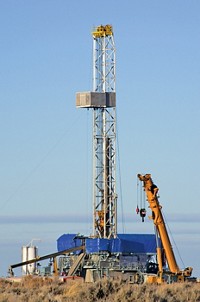Advertisement
Grab your lab coat. Let's get started
Welcome!
Welcome!
Create an account below to get 6 C&EN articles per month, receive newsletters and more - all free.
It seems this is your first time logging in online. Please enter the following information to continue.
As an ACS member you automatically get access to this site. All we need is few more details to create your reading experience.
Not you? Sign in with a different account.
Not you? Sign in with a different account.
ERROR 1
ERROR 1
ERROR 2
ERROR 2
ERROR 2
ERROR 2
ERROR 2
Password and Confirm password must match.
If you have an ACS member number, please enter it here so we can link this account to your membership. (optional)
ERROR 2
ACS values your privacy. By submitting your information, you are gaining access to C&EN and subscribing to our weekly newsletter. We use the information you provide to make your reading experience better, and we will never sell your data to third party members.
Environment
Electricity From Hot Rocks
The enormous potential of untapped natural and engineered geothermal energy sources
by Jeff Johnson
August 17, 2009
| A version of this story appeared in
Volume 87, Issue 33

Seventy-two miles north of San Francisco, just east of Northern California’s famed wine country, sits The Geysers, the world’s largest complex of geothermal electric power plants. Secluded among the live oaks and rolling hills, the complex has generated electricity from naturally occurring steam since 1921. The steam power first fueled an on-site resort and spa; 40 years later, a power plant was expanded to produce electricity for sale. Today, The Geysers has a generating capacity of some 850 MW of electricity, just 150 MW short of the output of a nuclear power plant.
The 30-sq-mile complex includes 23 power plants, 350 steam wells, and hundreds of miles of piping. Calpine Corp. owns 17 of the power plants, with a generating capacity of about 725 MW. The company is now planning a $200 million expansion.
For decades, geothermal energy has been a small, nearly insignificant global provider of electricity. The U.S. is the world’s largest generator of geothermal electricity, with a capacity of about 3,000 MW, which is equivalent to three nuclear power plants.
California leads U.S. production with 2,600 MW, enough to satisfy about 4% of the state’s electricity needs. It is followed by Nevada (333 MW) and six other Western states with far smaller geothermal electricity output.
As a renewable energy source, geothermal electricity may be on a roll, says Karl Gawell, executive director of the Geothermal Energy Association. He estimates that power companies are planning capacity for another 5,000 MW of geothermal electricity; most projects, however, are in the early stages, and their fate may turn on whether geothermal energy can ride the wave of growing national demand and support for non-carbon-emitting energy. Helping to spur the growth of geothermal electricity are recent federal tax incentives for renewable energy and state laws requiring utilities to purchase renewable energy.
Geothermal energy producers are beginning to take advantage of the Obama Administration’s support for new sources of carbon-free energy, according to Gawell. Of the $38.7 billion in American Recovery & Reinvestment Act funding for the Department of Energy, for instance, geothermal energy development will get $400 million, a huge jump from past federal funding levels.
Just two years ago, geothermal electricity received only $5 million in federal support, says Edward J. Wall, geothermal technologies program manager at DOE. It was viewed as a mature technology that could get along on its own. But next year, DOE is seeking $50 million in program funding, on top of the funds from the recovery act.
Wall and Gawell stress several advantages of geothermal energy: It provides power 24/7. It emits little air pollution and greenhouse gases, and it is renewable and sustainable. Unlike wind or solar energy, geothermal energy does not depend on weather.
Earth’s core is hot, heated mostly by radiation and gravitational compression, and in some parts of the world, molten rock or magma exists relatively close to Earth’s surface, such as in the volcanically active Pacific Rim of Fire. Over the eons, water has found its way underground; when held in cracks and pores in rocks heated by magma, this groundwater boils, and steam may rise to Earth’s surface in hot pools and geysers. The hot water may also be capped by rock sheets under Earth’s surface. If broached by a well, these cap rocks release the heated water to the surface to be used to fuel geothermal energy systems.
The technology comes with problems, however. Harnessing geothermal energy involves deep-earth production activities that generate small earthquakes, and the hot water and steam it draws to the surface can contain a “periodic table of elements,” Gawell notes. The water can be caustic, vary in acidity, or carry sediments that destroy equipment and require special handling.
“Mother Nature is fickle,” Gawell says, “and operators are always dealing with different chemical composition in the fluids, which change over time. Metals are formed at the mantle, and geothermal sites have totally different chemistries, and most have unique formations.”
Also, Gawell says, good geothermal resources are getting harder to find, and that means higher costs for exploration and development. For geothermal energy to grow, developers are likely to have to go deeper and explore wider areas to find new sources.
Still, supporters say, geothermal energy has great potential.

A report last year by the U.S. Geological Survey, its first geothermal study in 30 years, found a potential for 9,000 MW of power generation from identified but untapped geothermal sources. USGS estimated that another 30,000 MW of electricity could be generated from yet undiscovered geothermal sources, all of which are in the geologically active western U.S.
Similarly, a report by a Massachusetts Institute of Technology panel on geothermal energy estimated that as much as 100,000 MW of competitively priced electricity could be developed by 2050 through a system of engineered geothermal reservoirs, also called enhanced geothermal systems. These power plants might be developed in areas throughout the country that have naturally occurring areas of hot rock but lack water. The engineers will supply the water.
“Geothermal is a natural resource,” Gawell explains. “It is not a product. It has some similarities to oil drilling, where you always look at the cost of the next oil field.” In the past, he explains, “you would just look for a place where hot rock and water interact and tap in.”
That was the case for The Geysers, where steam at about 100 psi and 175 °C comes to Earth’s surface. After impurities are removed, the steam directly drives turbines and generates electricity. After use, most of the steam is lost, but about one-quarter is reinjected underground.
Although this sounds simple, The Geysers has had problems. The underground activity generates small but consistent earthquakes, and the water reservoir began running low about 25 years ago. At that time, plant operators found a win-win solution: using treated wastewater. Now, about 19 million gal of treated wastewater recharges the underground aquifer daily, Calpine says, piped from nearby cities that are glad to see the wastewater go.
The Geysers is typical of a “conventional” geothermal operation, explains David D. Blackwell, geology professor at Southern Methodist University, in Dallas. At this site, magma is relatively near Earth’s surface—about 4 miles down. Calpine’s wells go down at most 2 miles, blasting through cap rock to release and capture the steam.
“In the U.S.,” Blackwell says, “we are reaching the end of our magmatic sources, except for Hawaii and Alaska.” Sources still exist, he says, but they are often locked up in national parks, wilderness, and protected areas or are harder to find.
The problem with new geothermal sources is that they may not have “surface expression,” notes Gawell, referring to visible geysers or hot pools. They also might require deeper drilling or may not generate water that’s hot enough to produce electricity. But studies show that geologically active continental spreading zones, driven by tectonic plate movement, in the West appear to have great potential for conventional geothermal development. Such sources will take more money and work to discover and exploit.
Also, Blackwell predicts that in the Midwest and Gulf Coast regions, a growing source of geothermal power will be hot water associated with oil and gas drilling and production.
But in the longer term, engineered or enhanced geological systems (EGSs) are the hope.
“If you drill deep enough, heat is available almost anywhere on Earth,” Wall says. However, nature doesn’t often provide sufficient water or a reservoir to hold it. With EGS, the plan is for humans to bridge the gap.
First, reservoirs are created by drilling down to areas of hot rocks. Pressurized fluids sufficient to fracture rocks are then pumped in. The fractures, in the micrometer range, create a permanent pathway for injected water to flow. This allows the water to pick up Earth’s heat as it flows between the drilled reservoirs, Blackwell explains.
This is a closed-loop system where water is continuously reinjected back into the reservoir. Fracturing oil and gas wells to increase productivity is common in oil and gas fields, but it has generated concerns about groundwater contamination (see page 28).
The associated power plant itself will also be a closed-loop, “binary cycle” system, separate from the geothermal water system. The hot water passes through a heat exchanger, transferring its heat to a refrigerant. The refrigerant boils at a lower temperature than water and, when allowed to vaporize, provides sufficient pressure to drive a turbine and generate electricity. Because both systems are closed loops, neither would release aboveground contaminants, Wall says.
Binary-cycle geothermal systems are already in use at active sites, but no EGSs are operating, Wall notes, adding that several are under examination.
About half of DOE’s geothermal recovery act funds support EGS demonstration projects, new exploration technologies, and research and development to develop better EGS components. In particular, Wall wants to knock down the high capital costs for EGS exploration, drilling, and construction.
In addition to the recovery act funds, DOE provided $43 million last year in four-year grants to support 21 EGS
demonstration projects. Among those was a $6 million grant to AltaRock Energy, which until a week ago was just beginning a demonstration project near The Geysers.
The project is on temporary hold following a flurry of media reports comparing it with an EGS project in Basel, Switzerland. In 2006, an EGS experiment there generated an earthquake large enough to be felt by nearby residents when high-pressured water was injected into a fault. The reports fired up community fears, and DOE stopped the AltaRock project.
In a statement, DOE stressed that public concern triggered the review, not a “geologic event.” DOE plans to conduct a review, comparing the two sites before work is restarted.
“Basel was a mistake,” says Blackwell, who is a technical adviser on the AltaRock project. Pressurized water should not have been injected into an active fault, he says, but he notes that all hydraulic factures generate earthquakes. “In fact, small earthquakes are how the fields are mapped,” he says.
Calpine has taken notice. “Yes, we get mini-earthquakes,” says Norma Dunn, a Calpine spokeswoman. “Some neighbors feel them, and some don’t. But remember, we are celebrating 50 years of operation. We are careful.”





Join the conversation
Contact the reporter
Submit a Letter to the Editor for publication
Engage with us on Twitter